To begin with he was Austrian not German. Although all his film work prior to 1934 were made in Germany. He was born in Vienna “The City of Music”, or “The City of Dreams”. Take you pick one was named for the composers born in the city like Franz Schubert and Johann Strauss. The other because Vienna was also the birthplace of Sigmund Freud. The date of his birth was December 5, 1890 and his father Anton was an architect and construction company manager. His mother was named Pauline, but called “Paula” and his name was Fritz Lang.
It is interesting that like many early directors in the motion picture industry Fritz Lang started out in a different direction in his case after graduating from the “Technical University of Vienna” as a civil engineer. Shortly after receiving his degree Lang would switch from drawing technical specs to actual art. In 1910 he started traveling throughout Europe. Adding Africa and later Asia and the Pacific Islands. Three years after switching careers found Lang studying art in 1913 Paris.
At the outbreak of World War One Fritz Lang enlisted in the Austrian army and fought in both Russia and Romania against the Czar. In 1918 he was discharged with the rank of lieutenant after being wounded three times. Another short bio implied he was discharged not from several serious injuries as most state, but from being shell-shocked and unfit for duty. Whichever are the true events while convalescing in a military hospital Fritz Lang became interested in motion picture screenwriting and began writing them. His scripts were produced as early as 1917 prior to receiving his official military discharge. Lang would even try the boards as an actor in the Viennese theater during 1917 and 1918 prior to his official discharge.
Erich Pommer is considered the most important person in the budding German and European Film Industry during the 1920’s and 1930’s and one of the founders of the “Expressionist” movement. Pommer read Lang’s work and hired him initially as a writer for “Decia-Bioscop” in 1917. He would later take Lang with him to Ufa.

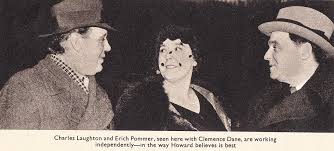
From the start of 1917 into mid 1918 Fritz Lang wrote the screenplays for five films and then Pommer decided to make him a director. We know the title of that first film with the screen credit directed by Fritz Lang and also written by him entitled “Halbblut (Half-Blood)” released April 3, 1919. We also know the cast of the movie, but we have no idea what the movie was about. Even the German Wikipedia has no specific details.
Halbblut (English: Half-blood) is a 1919 silent film directed by Fritz Lang. It was the first film Lang directed. The film starred Carl de Vogt, Ressel Orla, and Carl Gerard Schröder. It is presumed to be lost.
For September of 1919 Fritz Lang’s filmography mentions a 60 minute film “Der Herr der Liebe (The Master of Love)”. It is unique because it was the only film Lang directed, co-wrote and acted in a small role. The story is about a Hungarian nobleman named Vasile Disecu who becomes infatuated with Suzette, the daughter of his neighbor. He somehow mistakes Stefana, Suzette’s maid who is secretly in love with Vasile, for Suzette and makes love to her. When Yvette, his wife, finds out, she avenges herself with a liaison with Lazar, a Jewish peddler. Vasile imprisons Lazar. He then kills Yvette and commits suicide. One just loves a happy ending.

Also during 1919 Fritz Lang married Lisa Rosenthal. The first question to ask is who Lisa Rosenthal was, because there is no known history of her life. Only two facts remain to discuss about her. The first was she was Jewish and came from “Vilnius” in Russia. The second fact is that Lisa Rosenthal committed suicide, or maybe it wasn't a real fact because she was murdered by her husband Fritz Lang.
There are several articles on line about her death and the following paragraphs come from somebody name William Ahearn. (I tried to find out who he was, but the link took me to a page with all those “We found William Ahearn” links on it.)
http://www.williamahearn.com/lisa.html
http://www.williamahearn.com/lisa.html
The following is part of his article on the death of Lisa Rosenthal:
One reference that I found was in Robert A. Armour’s Fritz Lang, published by Twayne Publishers in 1977. Armour wrote, “[Fritz] Lang divorced his first wife and married [Thea] von Harbou.”
Lang didn’t divorce Lisa Rosenthal. Rosenthal died of a gunshot wound to the chest and therein hangs a tale that Lang left behind when he fled from Germany in 1933. The story is told in Patrick McGilligan’s Fritz Lang: The Nature of the Beast and the recap goes something like this: Thea von Harbou was married to actor Rudolf Klien-Rogge and when her affair with Lang – that was no secret to the film community – heated up, she moved out of her home with Klien-Rogge and moved into the same apartment building as Fritz Lang. One day Lisa Rosenthal comes home unexpectedly and finds Lang and Harbou engaged in “violent petting,” as Lang described it later, on the sofa. Shortly thereafter, Rosenthal is found dead in the bathtub from a gunshot to the chest delivered by Lang’s WWI sidearm that he kept as a memento. Phone calls were made but it wasn’t the police that were called immediately and suspicions flew. Harbou and Lang swore that Rosenthal shot herself and there was little the police could do and Lang and Harbou were charged with denial of assistance although that charge was soon dropped.
Suspicion fell on Lang that he had shot Lisa Rosenthal and émigrés brought that story to Hollywood years later although only in hushed tones and never when Lang was within earshot. No one has ever suggested that Thea von Harbou was in any way involved although obviously, if Lang killed his wife, von Harbou was some sort of accomplice even if only after-the-fact.
Whatever the truth Thea von Harbou and Fritz Lang were married in 1922 shortly after the reported death of Lisa Rosenthal and the start of a significant motion picture partnership began covering the next 11 years.

Thea von Harbou
Thea von Harbou
Of interesting film note is that two years prior to the death of his first wife. Erich Pommer offered “The Cabinet of Dr. Caligari” to Lang to direct which he turned down, because he was still working on “The Spiders”. One does have to wonder what the film would have been like under his direction and not Robert Wiene?
“Die Spinnen (The Spiders)” was a German serial style adventure series. Each installment is a self-contained story, but still tied to the others by the characters. Think "Indiana Jones" as the stories tell of San Francisco Adventurer Kay Hoog and his battles with an evil crime syndicate known as “The Spiders”. Part One had been released in 1919 and the second installment was the one Fritz Lang was working upon when offered “Caligari”. Two more films were originally planned to complete the overall story, but were never filmed.




On May 26, 1922 a film was released directed by Lang from a screenplay by novelist Norbert Jacques, Thea von Harbou and himself. This 270 minute long silent film would be one of the most memorable of Lang’s career and the first of a trilogy that would not be completed until 1960. After Lang returned to Germany.
In 1893 Sir Arthur Conan Doyle first wrote about “The Napoleon of Crime” Professor James Moriarty”. Moriarty is the most widely known villain in the Sherlock Holmes Canon. In addition to Conan Doyle’s writings the Professor has appeared numerous times in movies and non-Conan Doyle Sherlock Holmes based stories, but in reality the character was hardly used by the original author. Moriarty actually appeared only in just two Sherlock Holmes stories “The Final Problem” and “The Valley of Fear”. However, he was mentioned by other characters in five short stories as a reference in passing. This meant that there were 53 Sherlock Holmes stories written by Sir Arthur Conan Doyle without him.
As far as the German and European cinema goes. There’s a character first mention in a 1921 novel by author Norbert Jacques that at the minimal is the equal to Professor Moriarty. The novel and film’s title are the same “Dr. Mabuse deer Spieler (Dr. Mabuse the Gambler)”.


Jacques’ described Dr. Mabuse as: “a criminal mastermind, doctor of psychology, and master of disguise, armed with the powers of hypnosis and mind control, who oversees the counterfeiting and gambling rackets of the Berlin underworld.” In essence Professor Moriarty’s doppelganger.
I highly recommend seeing this film with Thea von Harbou’s ex-husband Rudolf Klein-Rogge as Dr. Mabuse. Along with the 1933’s sound film “Das Testament des Dr. Mabuse (The Testament of Dr. Mabuse)” with the same actor. The final film in Lang’s trilogy is “Die 1000 Augen des Dr. Mabuse (The Thousand Eyes of Dr. Mabuse)” starring Bond villain Peter van Eyck in the title role. It would be 27 years after “Das Testament des Dr. Mabuse” appeared in theaters before the final film would be shot. It would also be the first of a series of non-Lang directed movies with van Eyck as the evil genius Doctor filmed and released during the 1960’s.




In 1924 Fritz Lang and his wife tackled a Norse legend that the German’s had claimed as their own. It would be the classic tale of Siegfried and the Nibellungs released as two silent films. The first was titled: “Die Nibelungen: Siegfried” running 143 minutes and the second part: “Die Nibelungen: Kriemhild’s Revenge” running 145 minutes. Probably the most famous version of the legend that is still viewed is Richard Wagner’s Opera written over a period of 26 years from 1848 to 1874.




However all of Fritz Lang’s previous work became overshadowed on January 10, 1927 with the release of the now lost 153 minute original cut of “Metropolis”. Two attempts have been made to restore the film. The first in 2002 ran 118 minutes, but more footage was found and the film was once more restored in 2010 to a running time of 148 minutes. Somewhere out there may be the missing five minutes of critical footage to complete Lang’s German expressionist epic science-fiction film.



For the few who may not know the story it tells of a dystopian future Germany under the rule of what is basically a corporation. It then follows the attempts of young Freder part of the elite and the son of the ruler of Metropolis to set things right. As the story progresses he falls in love for Maria a working class girl who also wants to see things changed.
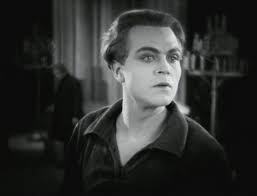



However all of Fritz Lang’s previous work became overshadowed on January 10, 1927 with the release of the now lost 153 minute original cut of “Metropolis”. Two attempts have been made to restore the film. The first in 2002 ran 118 minutes, but more footage was found and the film was once more restored in 2010 to a running time of 148 minutes. Somewhere out there may be the missing five minutes of critical footage to complete Lang’s German expressionist epic science-fiction film.
For the few who may not know the story it tells of a dystopian future Germany under the rule of what is basically a corporation. It then follows the attempts of young Freder part of the elite and the son of the ruler of Metropolis to set things right. As the story progresses he falls in love for Maria a working class girl who also wants to see things changed.
Fritz Lang’s imagery is everywhere in this film. It is not just the futuristic above ground world of luxury of the wealthy elite like young Freder as compared to the dungeon like underground world of the working class like Maria that treats the viewer’s eyes in Lang’s vision, but what is done to Maria that has always caught their attention also.


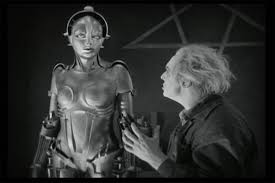

Rudolf Klein-Rogge once more comes through with a powerful performance as a scientist working with the ruler of Metropolis to solidify his power base. The mad genius of a scientist comes up with a plan to make a robot duplicate of Maria to mislead the workers who trust the real girl. The effect of changing the real Maria into her robot double and the look of the robot itself is classic cinema and often viewed by itself.


Eventually the son overturns the power of his father and in a climatic fight on the roof stops as the people of the city look on the evil scientist falls to his doom.


Here are a four behind the scenes looks at the filming of Fritz Lang's masterpiece.
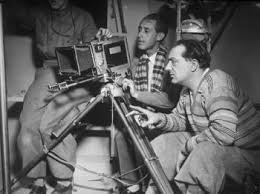
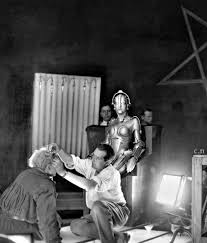
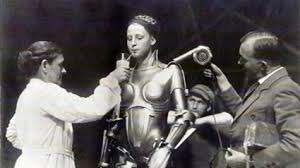
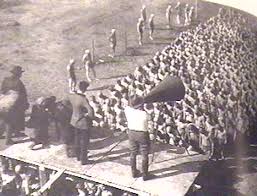
One quick comparison concerns the influence of the Maria Robot on George Lucas which I am sure all my readers are familiar with.


Even more ground breaking for motion pictures, the audience and rocket science was Lang and von Harbou’s 1929 film “Frau im Mond (Women in the Moon) released on October 15th. This was the first scientifically accurate science fiction film ever made. German Rocket Scientist Hernan Oberth one of the top in the world at the time designed the space craft and it was a working model also.
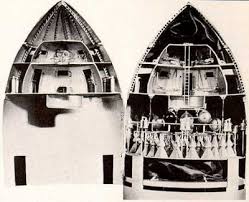


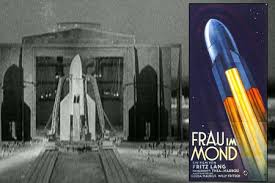
The description of the flight to the moon for its day and actually through the 1950’s is totally accurate and interesting to watch. Compare the scenes below from Fritz Lang's 1929 "Frau im Moon" with George Pal's
1950's "Destination Moon" made 21 years later.

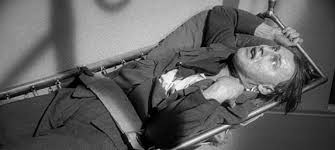
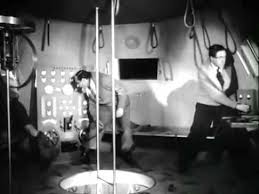
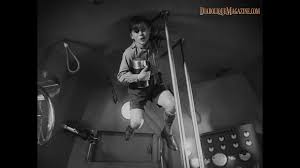

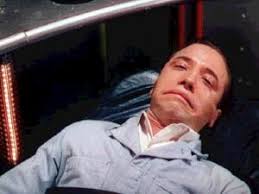
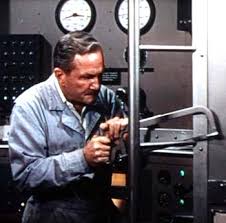

Lang, Harbour and Oberth’s ideas for the moon landscape is very cinematic and works quite well. Again compare them to "Destination Moon".



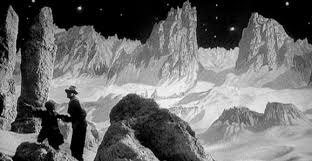




Eventually the son overturns the power of his father and in a climatic fight on the roof stops as the people of the city look on the evil scientist falls to his doom.
Here are a four behind the scenes looks at the filming of Fritz Lang's masterpiece.
One quick comparison concerns the influence of the Maria Robot on George Lucas which I am sure all my readers are familiar with.
Even more ground breaking for motion pictures, the audience and rocket science was Lang and von Harbou’s 1929 film “Frau im Mond (Women in the Moon) released on October 15th. This was the first scientifically accurate science fiction film ever made. German Rocket Scientist Hernan Oberth one of the top in the world at the time designed the space craft and it was a working model also.
The description of the flight to the moon for its day and actually through the 1950’s is totally accurate and interesting to watch. Compare the scenes below from Fritz Lang's 1929 "Frau im Moon" with George Pal's
1950's "Destination Moon" made 21 years later.
Lang, Harbour and Oberth’s ideas for the moon landscape is very cinematic and works quite well. Again compare them to "Destination Moon".
However, it is what Thea von Harbou Lang came up with in 1929 to build tension and suspense in a silent movie for the launch of the space craft that is important to us today. She simply inserted during the scenes of the crew inside the craft and those in the bunker monitoring the launch the numbers 10 through zero in descending order and “The Countdown” was born.
In 1931 Fritz Lang’s first sound film was released and a film he always considered his finest work. The movie introduced a relatively unknown German actor even to that countries movie goers named Peter Lorre. Lorre plays Hans Beckert a child serial killer known only as “M”. A man so repulsive that the German Underworld is tracking him down. Of note is this portrayal would cast Lorre as the villain for years. His big English language break would be in Alfred Hitchcock’s “The Man Who Knew Too Much” from 1934 while Lorre was starting to learn to speak the language.
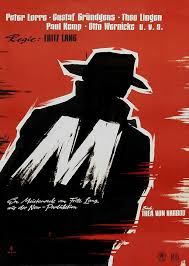
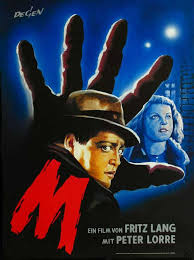
“M” is still powerful today and the scenes in an abandoned distillery were the criminals take child murderer Beckert to face their justice also work even 83 years after they were shot. By their own criminal code even a man as despicable as “M” is entitled to a hearing. The Underworld holds a kangaroo court trial giving Hans Beckert a chance to explain his actions. You find yourself reading every subtitled line of Lorre’s monologue defense of his actions and although, unless you speak German, you have no idea of the actual words being spoken are correctly translated. It is Peter Lorre’s tone and performance that mesmerizes the viewer.


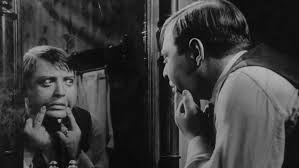
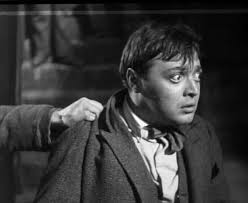
Germany at this time was starting to change as Adolph Hitler and his NAZI Party came to the forefront. It was within this background of changing German politics and racial persecution that Fritz Lang and Thea von Harbou brought back the aforementioned Dr. Mabuse in “Das Testament des Dr. Mabuse (The Testament of Dr. Mabuse).

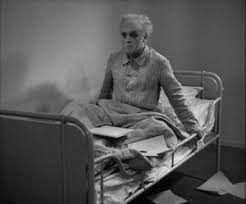


The motion pictures opens with the criminal mastermind an inmate of an insane asylum. Where even in his guarded cell he is working on his criminal plans and somehow they start being implemented. As a sign of the times in the motion picture industry prior to dubbing being used for release in other countries. A second version of the film was shot by Lang for the European Market in French with a French cast released as “Le Testament du Dr. Mabuse” using the same sets.


Germany at this time was starting to change as Adolph Hitler and his NAZI Party came to the forefront. It was within this background of changing German politics and racial persecution that Fritz Lang and Thea von Harbou brought back the aforementioned Dr. Mabuse in “Das Testament des Dr. Mabuse (The Testament of Dr. Mabuse).
The motion pictures opens with the criminal mastermind an inmate of an insane asylum. Where even in his guarded cell he is working on his criminal plans and somehow they start being implemented. As a sign of the times in the motion picture industry prior to dubbing being used for release in other countries. A second version of the film was shot by Lang for the European Market in French with a French cast released as “Le Testament du Dr. Mabuse” using the same sets.
Hitler came to power in January 1933 and on March 14th the new Nazi Ministry of Public Enlightenment and Propaganda was established under Joseph Goebbels. Lang had not finished editing the second “Dr. Mabuse” film and would not have a print for Goebbels to view until March 23rd. After viewing the motion picture Goebbels praised it as the type of film that Hitler wanted for Nazi Germany.Then contrary to that statement informed Fritz Lang that it would still have to be banned under the new rules, because the tone would decrease the audiences confidence in the country's Statesmen and Adolph Hitler himself. Then Goebbels did another about face and informed the filmmaker that because of the style of the motion picture he wanted Lang to work for him. Fritz Lang was offered the head of The German Cinema Institute the highest position in the film industry. He refused and after other filmmakers on Goebbels' list did the same. The position of top German Film Maker would be eventually offered to Leni Riefenstahl a basically unknown who accepted. Her story follows Lang's in this article.
Like his friends Billy Wilder and Peter Lorre the anti-Jewish tone of the Nazi Party bothered Fritz Lang. Thea von Harbou his wife supported the party, but Lang was worried that although he was a practicing Roman Catholic his mother had been Jewish. What could happen if the Nazi’s eventually discovered that fact? Lang and von Harbou would shortly divorce and in June of 1933 he left Germany for France. Some say he left in 1934, but his passport reflects the June 1933 date.
On April 27, 1934 Fox Europa released “Liliom” directed by Fritz Lang. His only movie made in France and starring French Actor Charles Boyer. Interesting this Fox Europa film was produced by Eric Pommer who had also left Nazi Germany. The play “Liliom” was by Hungarian writer Ferenc Molnar, but the story although produced in this country over the years is better known by its musical adaptation. Revised for the Broadway Stage by Rodgers and Hammerstein as “Carousel”.



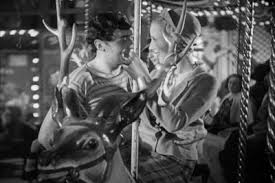
Lang would leave France for the United States and make his first movie here in 1936. The movie was “Fury” and told of an innocent man passing through a small town who is blamed for a girl’s kidnapping. The viewer watches as each time the story is told by one person to another, as in the child’s game of telephone, it keeps getting more distorted until a mob mentality develops. The newly created mob attempt to lynch the innocent man. Playing the accused was Spencer Tracy, but the lead in the film was actress Sylvia Sidney as his girlfriend. Tracy’s Joe Wilson is being protected by the Sheriff in the jailhouse and some of the mob attempt to burn the building down and two members light and throw dynamite causing an explosion. When the dust settles the Sheriff and the townspeople find the body of a dog, but no trace of Wilson. They believe he was literally blown to bits.


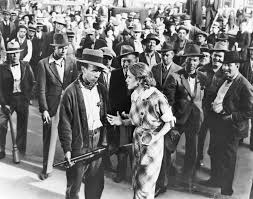

When the District Attorney after discovering Wilson’s innocence attempts to bring those responsible for this crime to justice. The town’s people again band together and refuse to assist him. However, they are confronted with newsreel footage of the bombing. Meanwhile Wilson who was actually freed by the blast and his brothers are seeking revenge on those people responsible for having him put in jail in the first place.


The film is outstanding, but critics complained about how MGM ruined Lang’s original ending by making him add a happy one with included a reconciliation between Tracy’s character and his girlfriend instead of the darker one originally shot. The film was budgeted at $604,000 and made $1,302,000 in 1936 dollars. Fritz Lang and Bartlett Cormack were nominated for an Oscar for the script. The picture and its reviews were a great welcome to Hollywood for Lang.
The film is outstanding, but critics complained about how MGM ruined Lang’s original ending by making him add a happy one with included a reconciliation between Tracy’s character and his girlfriend instead of the darker one originally shot. The film was budgeted at $604,000 and made $1,302,000 in 1936 dollars. Fritz Lang and Bartlett Cormack were nominated for an Oscar for the script. The picture and its reviews were a great welcome to Hollywood for Lang.
Lang would follow “Fury” with another Sylvia Sidney starring vehicle, but instead of Tracy as her co-star it was Henry Fonda with second billing. The released running time of the film, because of the censors was 86 minutes. A full 15 minutes had to be cut from “You Only Live Once”, because of extreme violence. Fonda is an ex-convict who is wrongly convicted of a bank robbery that six people are murdered during. He is sentence to death by electrocution. The film has a hard edge ending where Fonda has a gun smuggled in and is escaping when he accidentally kills the prison chaplain. The chaplain was on his way to tell him he has been pardoned as the body of the real killer and all the bank money has been found in a lake which he apparently drove into. This film went the other way at the box office and lost money. The budget was $628,138 and the box office $589,503.




Lang was combining the Expressionism style of his German films with what he saw of the work from American film makers. He was pioneering what would be known as “film noir” as other filmmakers started to copy his style.
During 1939 Fritz Lang become a naturalized citizen of the United States.
1940 saw Fritz Lang reunited with Henry Fonda in his first stint as a Western director. The movie was “The Return of Frank James” and it picks up the story of Frank after the previous film “Jesse James” directed by Henry King and starring Tyrone Power as Jesse and Fonda as Frank. This film like the first makes Frank James the good guy going after Bob and Charlie Ford for murdering Jesse.

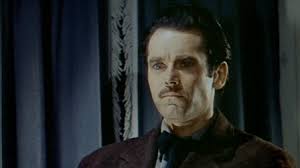
The following year Lang was still in Western mode with “Western Union” based upon the Zane Grey novel and starring Robert Young, Randolph Scott, Dean Jagger and Virginia Gilmore among other things the future Mrs. Yul Bryner in 1944.
The following year Lang was still in Western mode with “Western Union” based upon the Zane Grey novel and starring Robert Young, Randolph Scott, Dean Jagger and Virginia Gilmore among other things the future Mrs. Yul Bryner in 1944.
Even as with his previous crime films Lang was having problems with the Hays Commission’s Censorship on both his Westerns. While his skill as a director and artist was being recognized.
Bosley Crowther of The New York Times considered “Western Union”:
"spectacular screen entertainment" and applauded director Lang's ability to take a "firmly-constructed fiction" and keep it interesting with "plenty of action and colorful incident."
Adding that he considered the film:




one of the finest color films ever seen" and stating that Lang’s use of the Technicolor process produced "breath-taking shots of vast stretches of prairie across which the construction gang is seen drawing its tiny wire
“Man Hunt” starred Walter Pidgeon and Joan Bennett in what would be the first of four anti-Nazi films by Fritz Lang. Based upon Geoffrey Household’s classic thriller “Rogue Male” the story was revised by Dudley Nichols into a screenplay about a British Game Hunter who goes after the biggest game of all Adolph Hitler and the German’s hunt for him. The novel was also the inspiration for David Morrell’s first novel in his 1972 “the Haunted Man series”. Oh that books title: “First Blood” about a Vietnam veteran named Rambo. “Man Hunt” was also the first Hollywood movie for child actor Roddy McDowall who had been evacuated to the United States after the London Blitz by the German Luffwaffe.


1944’s “Ministry of Fear” has Ray Milland in a great World War 2 Spy Film Noir where he is a man just released from a mental asylum. He inadvertently get involved with an international spy ring after he is mistakenly given something they need. The story was from the novel by writer Graham Greene. Greene wrote “The Third Man” which would be made into a 1948 classic with Joseph Cotton looking for Orson Wells’ as Harry Lime.


1948 and 1950 would see two back to back movies were Fritz Lang entered the world of Horror. The first Psychological and the second Gothic.
1944’s “Ministry of Fear” has Ray Milland in a great World War 2 Spy Film Noir where he is a man just released from a mental asylum. He inadvertently get involved with an international spy ring after he is mistakenly given something they need. The story was from the novel by writer Graham Greene. Greene wrote “The Third Man” which would be made into a 1948 classic with Joseph Cotton looking for Orson Wells’ as Harry Lime.
1948 and 1950 would see two back to back movies were Fritz Lang entered the world of Horror. The first Psychological and the second Gothic.
Joan Bennett got top billing over Michael Redgrave in “Secret Beyond the Door” and one might attribute it to her husband Walter Wanger producing it. Although it is Fritz Lang’s name that appears on the film. A somewhat reverse, but typical Hollywood ploy had happened with 1943’s “Moontide”. Lang actually directed the majority of the movie, but Archie Mayo is credited on screen, Novelist John O’Hara was also credited on screen as the writer of that film, but Nunnally Johnson screenwriter for such major films as “The Grapes of Wrath”, “Along Came Jones”, “The Desert Fox: the Story of Rommel” and “The Dirty Dozen” did most of the work uncredited.
“Secret Beyond the Door” is a reworking of the Bluebeard story. Wikipedia has this description for the film:
The behavior of Mark Lamphere, an architect, turns strange shortly after his honeymoon with bride Celia, who begins finding out that Mark has many secrets.
It turns out he was married before, his wife died suspiciously and they have a son. He also has a fiercely loyal secretary, Miss Robey, whose face is disfigured.
Mark appears to be somewhat delusional and could be intending to murder Celia inside a room he keeps locked. The disturbed Miss Robey ends up setting fire to the house, whereupon Mark redeems himself by saving Celia's life.
The film was a major bomb with a screenplay by Silvia Richards that plays like a Sigmund Freud dream gone wrong. The script in some areas is a direct rip off of the 1940 movie “Rebecca”.
IMDb described “House by the River” considered a Gothic Film Noir as:
The unsuccessful writer Stephen Byrne tries to force his servant Emily Gaunt sexually while his wife Marjorie Byrne is visiting a friend and accidentally strangles her. His crippled brother John Byrne coincidently comes to his house in that moment, and Stephen asks him to help to get rid of the corpse and avoid a scandal, since his wife would be pregnant. The naive and good John helps his brother to dump the body in the river nearby his house. Stephen uses the disappearance of Emily to blame her and promote his book. When the body is found by the police, all the evidences points to John, and he becomes the prime suspect of the murder.
Fritz Lang wanted the part of Emily Grant to be played by a black actress, but both the producer Howard Welsch and Republic Pictures would have nothing to do with that idea. This was 1950 and they used the possible loss of bookings in the South as their main excuse.
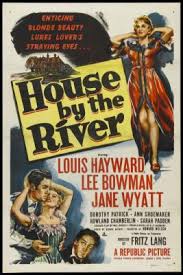



When the film came out it was panned by critics, but Tom Vick in his 2013 release “All Movie Guide by Rovi” wrote:
Lang beautifully evokes the Victorian era with his customary attention to detail. Cinematographer Edward J. Cronjager's low-key lighting fills the Byrnes mansion with appropriately gloomy shadows, and the moonlit river scenes make it seem as if nature itself is offended by the crime. Avant-garde composer George Antheil's haunting score is the perfect accompaniment to this chilling and unconventional exercise in suspense.
We now come to the ups and downs of “American Guerrilla in the Philippines” starring Tyrone Power and Tom Ewell. The movie is based upon the book by War Correspondent Ira Wolfert about the experiences of Navy Ensign Ilifff David Richardson whose PT boat was sunk. Richardson along with the crew became Guerrilla fighters in the Japanese controlled Philippines. The U.S. Army temporary transferred Richardson to their command during this time and he held the rank of Major.


Darryl F. Zanuck bought the rights to the book in 1945 when it came out from Ira Wolfert. The plan was to immediately make a movie. The original cast was to have been Fred MacMurray in the fictional role of Ensign Chuck Palmer and William Bendix as Jim Mitchell and shot in Puerto Rico by director Henry King. This was shelved and the film was recast with John Payne as Palmer and instead of the Mitchell character a female lead played by Linda Darnell was added and the plan was to film on Catalina Island. However, World War 2 ended and Zanuck stopped all World War 2 film production.
Move to 1950, the Korean War, and the return of the film project. Enter Tyrone Power as Palmer and Tom Ewell as Mitchell with Fritz Lang as director. This time the film would be shot in color and in the Philippine Islands with Philippine extras. The film premiered in the Philippines to excellent box office and critical praise. However, there was a protest by Filipino actors as not one Filipino name were in the credits. Zanuck would have the credits redone for all further releases giving the main Filipino actors appearance credit. This is Lang’s least favorite film of his career.
On May 23, 1952 RKO Pictures released one of my all-time favorite off beat Westerns Fritz Lang’s “Rancho Notorious” starring Marlene Dietrich, Arthur Kennedy and Mel Ferrer. This is the story of a criminal hideout called “Chuck-a-Luck” run by Dietrich and two men who become fast friends until one of them discovers it is the other they are out for revenge against over the death of his fiancee.


The original title for the film was “The Legend of Chuck-a-Luck” which the owner of RKO Pictures Howard Hughes disliked and changed to “Rancho Notorious”. At least he allowed the catchy story song to be left within the film as a means of scene change.
The critics including “Variety” didn't really like it. According to “Variety”:
This Marlene Dietrich western has some of the flavor of the old outdoor classics (like the actress's own onetime Destry Rides Again) without fully capturing their quality and magic. The characters play the corny plot [original story by Silvia Richards] straight; directing keeps the pace lively and interesting, and the outdoor shots, abetted by the constant splash of color, are eye-arresting. Dietrich is as sultry and alluring as ever...Dietrich is a dazzling recreation of the old time saloon mistress, and handles her song, 'Get Away, Young Man', with her usual throaty skill.
It’s that “corny plot” that I actually enjoy and the way the three leads play things straight. One also has to remember the picture came from the Howard Hughes Era at RKO. Where we also saw the Western “The Outlaw” where Hughes had his Trans World Airline structural engineers design a more uplifting bra for Jane Russell and John Wayne played Genghis Khan.
From a major play by Clifford Odets the 1952 film “Clash By Night” starred Barbara Stanwyck, Paul Douglas and Robert Ryan, but it was the fourth billed lead Marilyn Monroe that would make the news. During the filming of this semi-film noir a now famous calendar came out featuring her first nude shoot. Fritz Lang and the cast were having major problems with the news media who wanted to interview Monroe. This was also the first real problems for Marilyn dealing with the sudden publicity and not knowing how to mentally handle what she had created. The movie was a money maker and how much was due to Monroe’s calendar is unknown.


According to Wikipedia:
Critic Sam Adams wrote about Fritz Lang's directorial style, "Restraint was never Fritz Lang's problem. Indeed, his version of Clifford Odets' Clash by Night is overwrought verging on camp... In Clash's wild kingdom, strong women can only be sated by the threat of male violence: After she marries sturdy lug Paul Douglas, Stanwyck is unerringly drawn towards Ryan's volatile woman-hater, while fish-canner Marilyn Monroe shows her affection to fiancé Keith Andes by socking him in the arm, a gesture he threatens to return in spades. Lang tilled the same turf two years later in Human Desire, a similarly heavy-handed expose of man's bestial nature. Perhaps Lang should have stuck with the style of Clash's extraordinary, near-wordless opening, which begins with shots of seagulls and seals and slowly mixes in the actors in their natural habitats.
Fritz Lang next made in 1953 “The Blue Gardenia” the first of what would be called his “Newspaper Noir” trilogy. The second film “While the City Sleeps” and the final entry “Beyond a Reasonable Doubt” were both made and released in 1956. The films are connected not with cast, but as they revolve around newspapers and reporters being caught up in crime stories.



The non-screenplay importance of these three films is that “The Blue Gardenia” starts the last three years of making motion pictures in the United States for Fritz Lang and “Beyond a Reasonable Doubt” ends it. This was also the period when the director started to go blind.
The non-screenplay importance of these three films is that “The Blue Gardenia” starts the last three years of making motion pictures in the United States for Fritz Lang and “Beyond a Reasonable Doubt” ends it. This was also the period when the director started to go blind.
Between these films was 1953’s “The Big Heat” considered the last major work made by Lang in the United States! The film stars Glenn Ford, Gloria Grahame and Lee Marvin. The film noir is about Homicide detective Sergeant Dave Bannion played by Glenn Ford. He takes on the crime syndicate led by Mike Lagana that controls his city after they kill his wife. Bannion resigns from the force and becomes a vigilante and goes after Lagana’s second in command Vince Stone played by Lee Marvin. Gloria Grahame plays Debbie Marsh the girlfriend of Stone, but starts to fall for Bannion.
The film is best known for the scene in which Marvin’s Stone makes the mistake of disfiguring the face of Grahame turning her into the means of bringing him and his boss down. The film was well received by the film critics even though some thought Ford’s character is also really not likable to be someone the audience should identify with.


As critic Grant Tracey wrote:
As critic Grant Tracey wrote:
Whereas many noirs contain the tradition of the femme-fatale, the deadly spiderwoman who destroys her man and his family and career, The Big Heat inverts this narrative paradigm, making Ford [Det. Bannion] the indirect agent of fatal destruction. All four women he meets—from clip joint singer, Lucy Chapman, to gun moll Debby—are destroyed.
I have seen the film several times and always enjoy the interplay between the three leads. As it is a character drawn film.
With the exception of the Newspaper Trilogy during this period the two other films Fritz Lang made before he left the United States for Germany in 1959 are truly forgettable. As I mentioned previously Lang was losing his sight and now wore an eye patch over his right eye looking like a pirate captain which apparently he joked about.
In 1959 Lang directed the first of two German-French-Italian films which became “Fritz Lang’s Indian Epic” about a German architect in India. The first film was “Der Tiger Von Eschnapur (The Tiger of Eschnapur)” and starred American Actress Debra Paget and German Actor Paul Hubschmid. Hubschmid used a more non-German name when he made films in Hollywood. My readers who are into Science Fiction and Stop Motion Animation know Hubschmid under his American acting name of Paul Christian from Ray Harryhausen’s 1953 classic “The Beast from 20,000 Fathoms” as the two following pictures show.

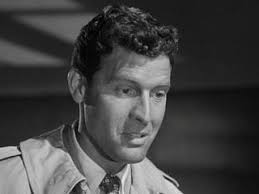
The first film has architect Harold Berger, Hubschmid, arriving in India to build for a Maharaja. While there he saves a young dancer, Paget, from a tiger. The two fall in love, but she is promised to the Maharaja. The film ends as a cliffhanger with the two fleeing into the desert from the Maharaja as he decides now to build a tomb and will use Berger’s brother as the builder.




The first film has architect Harold Berger, Hubschmid, arriving in India to build for a Maharaja. While there he saves a young dancer, Paget, from a tiger. The two fall in love, but she is promised to the Maharaja. The film ends as a cliffhanger with the two fleeing into the desert from the Maharaja as he decides now to build a tomb and will use Berger’s brother as the builder.
The second film also in 1959 “Das indische Grabmal (The Indian Tomb)” picks up the story as the Maharaja continues to build his tomb and settles the love story of the Berger and Dancer characters.

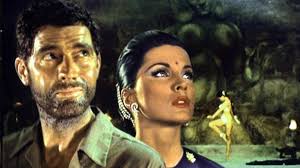


The original film version of these stories was a single three and a half hour silent film made in 1921 based upon a novel by Lang’s wife Thea von Harbou. Fritz Lang did not direct. When he made his version Lang divided the story into two films of about 100 minutes each.
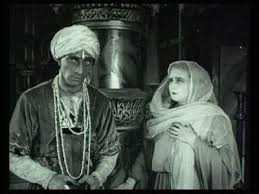

James H. Nicholson at American International Pictures acquired the rights to the two films. AIP proceeded to edit them into one film running 95 minutes. The title of the film depending on where they showed it was either “Journey to the Lost City”, or “Tiger of Bengal”. AIP once more billed Paul Hubschmid as Paul Christian. The Hayes Office also got into the act and Debra Paget’s dance was heavily edited. You can find the dance on You Tube as originally filmed.
Lang’s original cut of the two films was thought lost, but a copy of both were discovered and released on two separate DVD’s with both a German and English language track by Image Entertainment in 2001.
As mentioned earlier in 1960 the last film in Lang’s Dr. Mabuse Trilogy was made. “Die 1000 Augen des Dr. Mabuse (The Thousand Eyes of Dr. Mabuse) starred Peter van Eyck in the title role and Gert Frobe four years before he would play “Goldfinger” as the Police Inspector after him. However, it was British Actress Dawn Adams who had top billing. The film was not up to the quality of Lang’s previous two, but spawned the series of films I also mentioned before.
Lang would appear in a cameo as himself in French director Jean-Luc Godard’s “Contempt” in 1963. After which Fritz Lang disappeared from the motion picture industry and most movie goer’s knowledge. On television “Western Union” and “Rancho Notorious” would show up from time to time and even “The Big Heat”, but unless you were a Foreign film buff going to an Art House movie theater to see a bad prints of “Metropolis” and “M”, or one of his two earlier Mabuse film’s the name of Fritz Lang means nothing to the average American movie goer.
Sometime after the Godard film Fritz Lang’s friendship with actress Lily Latte whom he had directed back in 1934 France in “Liliom” apparently became more than that. The two were married in 1971 and that would last until his death in 1976. Lang is buried in the Forest Lawn-Hollywood Hills Cemetery in Los Angeles.
Fritz Lang’s American period of film making is ignored by most Cinema historians and film critics and passed off as nothing more than a few war era movies, spy films and thrillers. His champions are found in Europe and especially France with such film makers as Francois Truffaut and Jacques Rivette.


One does not know their future at birth and it can still haunt you at 101 years of age on your death bed.
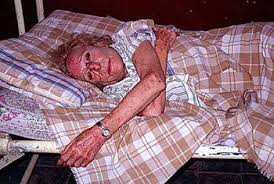
In 1933 Joseph Goebbels offered Fritz Lang the position of head of “The German Film Institute” which would have made Lang the most powerful film maker in the country, but it also meant Fritz Lang would be working hand and hand within the policies of the Nazi Party and mandated to join the party. Lang’s answer was “no”! Shortly after the offer he left Germany and would not return for another 26 years.
Goebbels needed a film maker to head the institute and was turned down by other filmmakers he approached. One reason was the German film industry was predominately Jewish in the director and producer areas. Eventually Joseph Goebbels made the same offer to 31 year old Leni Riefenstahl and she accepted.